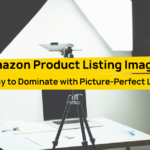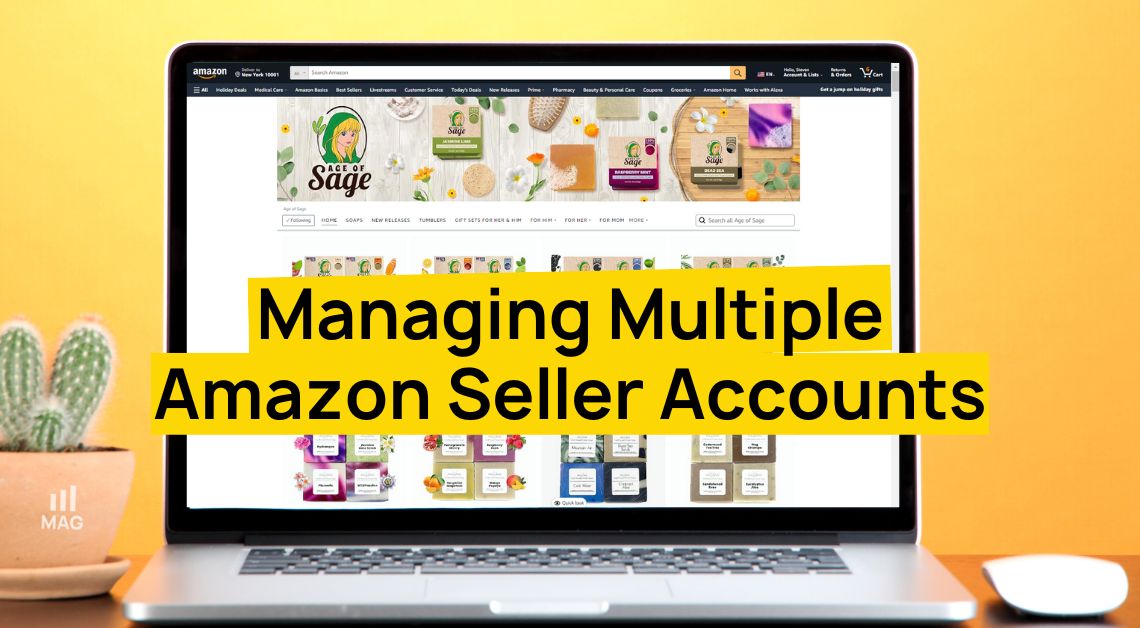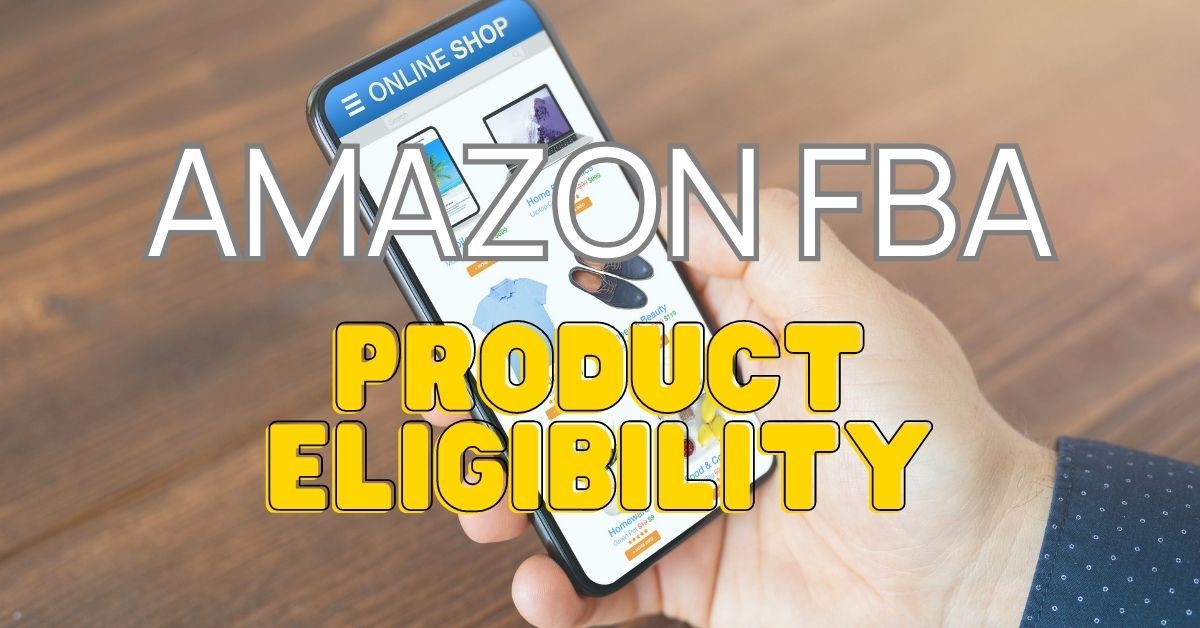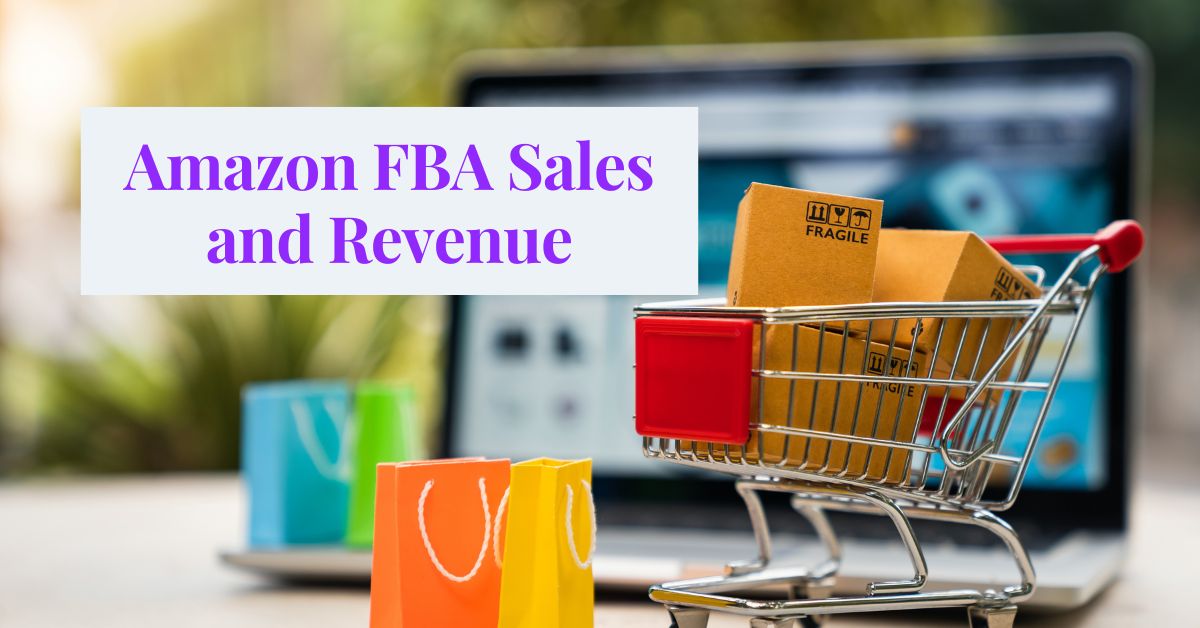How well do you know an Amazon Product ListingAnatomy ? As a seller, it is important that you are aware about how each component of the listing can contribute to your success.
In this blog post, our Amazon Agency will take a closer look at the Amazon product listing anatomy. Let us explore ways on how sellers can edit or influence these parts for increased visibility, conversion, and sales.
Why Do Sellers Need To Know The Parts Of An Amazon Product Listing Anatomy
Understanding the various components of an Amazon product listing is crucial for sellers due to several key reasons:
Optimized Visibility:
Well-crafted titles and product details improve visibility in search results.
Utilizing relevant keywords helps potential customers find your product easily.
Conversion Rate Optimization:
Compelling bullet points and product descriptions enhance the likelihood of conversion.
Clear, concise content helps customers make informed purchasing decisions.
Competitive Edge:
A well-structured listing distinguishes your product from competitors.
Highlighting unique features and benefits sets your offering apart.
Customer Trust and Confidence:
High-quality images and detailed descriptions build trust.
Positive reviews and ratings reinforce the credibility of your product.
Compliance with Amazon Guidelines:
Adhering to Amazon’s guidelines for titles, images, and other listing elements is essential.
Non-compliance may lead to penalties or removal of the listing.
Mobile Optimization:
Many shoppers use mobile devices; concise and engaging content is crucial for smaller screens.
Mobile-optimized listings improve the user experience.
Keyword Relevance:
Strategic placement of keywords improves search ranking.
Understanding customer search behavior aids in selecting relevant keywords.
Marketing and Advertising Effectiveness:
Accurate product information supports effective advertising campaigns.
Consistent messaging across listings, ads, and promotions enhances brand cohesion.
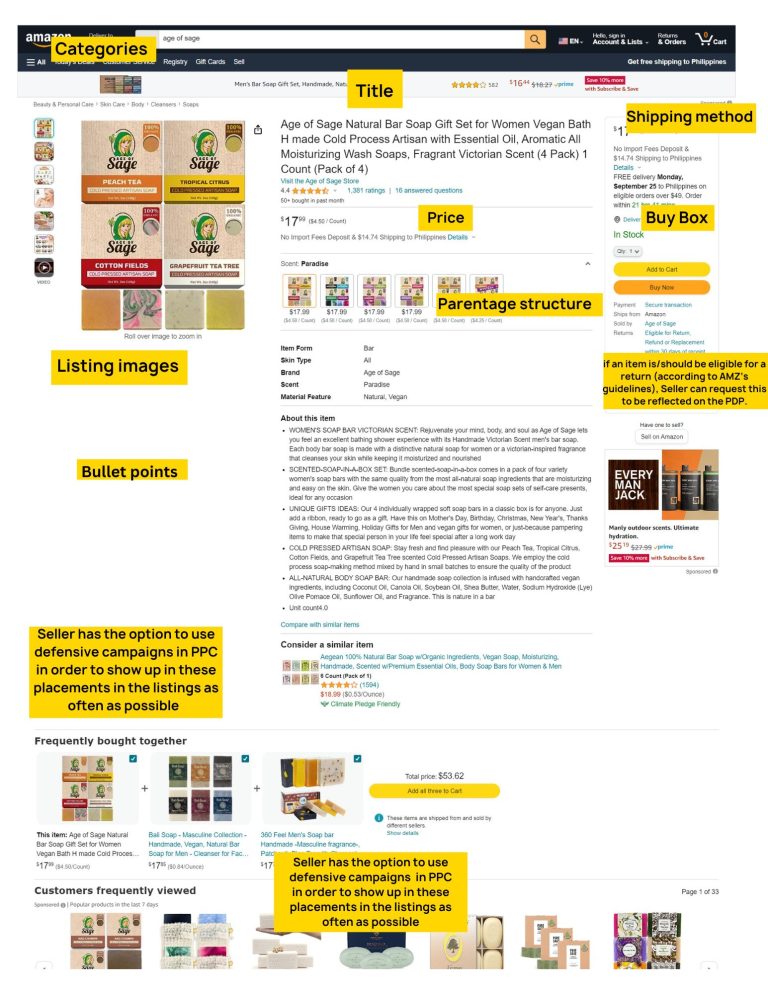
Amazon Product Listing Anatomy – Title
What is “Product Title” and how important is it in an Amazon Product Listing?
Millions of products compete for attention on Amazon, but your Product Title stands out as the primary gateway to your listing. It’s a carefully crafted message that can make or break your sales.
The “Product Title” in an Amazon product listing is the main heading that provides a concise and informative overview of the product. It is a crucial element for several reasons:
- First Impression: The product title is often the first thing potential customers see. It creates the initial impression and influences their decision to click on the listing.
- Search Visibility: A well-optimized title improves the product’s visibility in Amazon’s search results. Relevant keywords in the title increase the likelihood of the product appearing in relevant searches.
- Click-Through Rate (CTR): A compelling and clear title encourages users to click on the listing. This contributes to a higher CTR, bringing more potential customers to the product page.
- Product Identification: The title succinctly identifies the product, including key features, brand name, and other essential details. It helps customers quickly understand what the product is about.
- Brand Recognition: Including the brand name prominently in the title contributes to brand recognition. This is important for building trust and loyalty among customers.
- Keyword Optimization: The title allows sellers to strategically incorporate relevant keywords, contributing to the product’s discoverability and search ranking.
- Mobile Optimization: With an increasing number of users shopping on mobile devices, an optimized title ensures a positive mobile user experience, capturing a broader audience.
- Competitive Differentiation: A well-crafted title highlights unique selling points, setting the product apart from competitors and influencing purchasing decisions.
- Compliance with Guidelines: Following Amazon’s guidelines for product titles is essential. Non-compliance may result in penalties or the removal of the listing.
- Conversion Rate Optimization (CRO): The product title is a key factor in converting potential customers into buyers. Clear and compelling titles contribute to a positive shopping experience.
Imagine the difference:
- Bland Title: “Stainless Steel Water Bottle”
- Compelling Title: “Leakproof Eco-Friendly Travel Bottle: Keeps Drinks Cold for 24 Hours”
The second title paints a clear picture, triggers interest, and highlights key features, ultimately making it much more likely to attract and convert customers. This version also helps boost your SEO.
Title Optimization Tips
Brand Name Placement:
In most categories, it’s mandated to include the brand name at the front of the title.
For new brands without significant recognition, consider avoiding the brand name at the beginning unless it’s a well-established brand with substantial search volume.
Descriptive Words:
The next four or five words should succinctly describe the product, assuming that customers may only read this part.
Focus on what potential customers are searching for, like the example “mega pint cup.”
Feature-Focused and Descriptive Information:
Include a more descriptive feature or specification, even if it may not be a high-search keyword.
Place sizing information towards the end to avoid potential confusion, especially if the product name implies a larger size.
Keyword Optimization:
Use keyword-heavy phrases that potential customers might search for.
Keyword stuffing is acceptable but should remain relevant to the consumer.
Monitoring and Adjusting:
Regularly monitor keyword performance using tools like Cerebro and adjust the title based on search query performance reports.
Add relevant keywords that enhance the listing’s discoverability.
Example of Keyword Stuffing:
While over-the-top keyword stuffing may include phrases like “johnny depp mug for captain jack sparrow fans,” it can be effective if backed by data and customer behavior.
Adapting to Trends:
Adapt the title based on trends and new insights from customer searches.
Example: Adding “jack sparrow fans” and an eye patch based on emerging keyword trends.
Competitor Analysis:
Analyze competitors’ keyword strategies using tools like Cerebro to identify relevant keywords to include in the title.
Continuous Optimization:
Titles are not static; they should be continuously optimized based on changing trends, customer behavior, and search data.
The title of a product can significantly influence its discoverability and success on Amazon. Below is a video you can watch:
Amazon Product Listing Anatomy – Listing Images
“Listing Images” refer to the visual representations of a product that are included in an Amazon product listing. These images are a vital aspect of an Amazon product listing. They significantly impact the customer’s perception, trust, and decision-making process.
Sellers should invest in high-quality, informative, and compliant images to optimize their product listings for success on the platform. Here’s why they are important:
- Visual Appeal: Images are the first things that catch a shopper’s eye. High-quality, visually appealing images make a positive impression and entice customers to explore the product further.
- Product Understanding: Images provide a clear and detailed view of the product. They help customers understand the physical attributes, design, and functionality, reducing uncertainty and increasing confidence in the purchase.
- Trust and Credibility: Well-presented images contribute to the trustworthiness of the listing. Customers are more likely to trust a product with clear, professional images, leading to increased credibility for the seller.
- Conversion Rate Optimization (CRO): Compelling images contribute to a higher conversion rate. When customers can visualize the product and its benefits, they are more likely to make a purchase.
- Multiple Perspectives: Including various angles and close-up shots provides customers with a comprehensive view of the product. This helps in making informed decisions and reduces the likelihood of returns due to unmet expectations.
- Mobile Optimization: With a growing number of users shopping on mobile devices, images need to be optimized for smaller screens. Clear, concise images enhance the mobile shopping experience.
- Compliance with Guidelines: Adhering to Amazon’s image guidelines is crucial. Non-compliance can result in penalties or the removal of the listing. Following size, resolution, and other specifications is essential.
- Brand Consistency: Maintaining a consistent visual style across all images reinforces brand identity. Consistency contributes to a professional and cohesive brand image.
- A/B Testing Opportunities: Sellers can experiment with different images to see which ones resonate best with their target audience. A/B testing allows for continuous improvement based on customer response.
- Emotional Connection: Images have the power to evoke emotions. Including lifestyle or context images that resonate with the target audience helps create a connection and enhances the overall appeal of the product.
Product Images Optimization
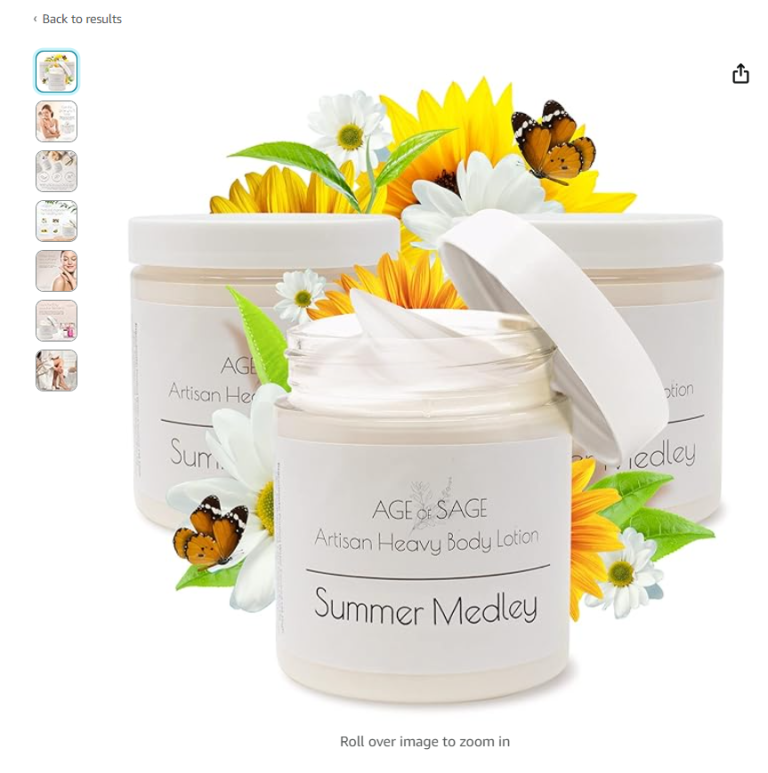
The photo stack refers to the set of images that you see on a listing.
- Main or Hero Image is the first image you see. You can follow our Main Image Hack for better CTR
- Secondary Images are the other photos you can see in the listing. They can be infographic, lifestyle, feature, and aspirational images
Some image optiomizatioin tips to follow:
Understand Customer Preferences:
Conduct A/B testing to gather feedback on different images.
Be attentive to customer reactions and preferences.
Eliminate Unwanted Elements:
Remove images that receive negative feedback or are disliked by customers.
Focus on images that enhance the product’s appeal.
Highlight Product Features:
Showcase key features that matter to customers.
Use high-quality images of the product to attract attention.
Eye-Catching Main Image:
Design a main image that stands out when customers search for your product.
Consider the visual impact and attractiveness of the main image.
Utilize Video Ads:
Incorporate simple and effective video ads.
Use videos to highlight product usage and features.
Differentiate Through Packaging:
Experiment with packaging variations.
Highlight the uniqueness of your product’s packaging to attract attention.
Leverage Customer Reviews:
Incorporate positive aspects mentioned in customer reviews into your images.
Address any concerns or misconceptions raised by customers.
Showcasing Ingredients:
Include images that showcase the natural ingredients in your product.
Educate customers about the benefits of specific ingredients.
Adapt to Customer Feedback:
Modify images based on customer feedback and market trends.
Continuously improve and optimize your image strategy.
Focus on Branding:
Develop a consistent visual identity for your brand.
Incorporate elements that resonate with your target audience.
You can read our previous blog post Amazon Image Policies and Troubleshooting Guide For Standout Listings for a better understanding on how to optimize product imagesthat are Amazon-compliant.
Here are some videos to watch to know more:
Amazon Product Listing Anatomy – Categories
The product category is a fundamental aspect of an Amazon product listing, impacting search visibility, customer discovery, and overall competitiveness. Sellers should carefully select the most relevant category for their products to optimize their presence on the platform. The importance of the product category in an Amazon product listing can be outlined as follows:
- Search Relevance: Placing a product in the correct category ensures that it appears in relevant searches. Customers often browse or search within specific categories, and accurate categorization improves the likelihood of discovery.
- Browse Navigation: Amazon’s browse structure allows users to explore products within specific categories. Placing a product in the appropriate category facilitates its visibility to customers who prefer browsing through categories rather than searching.
- Competition: Each category has its own level of competition. Choosing the right category can help a product stand out and compete more effectively. Sellers should consider the competition within a category when deciding where to list their product.
- Amazon’s Algorithm: Amazon’s algorithm takes into account the relevance of a product to a customer’s search query. The product category is a key factor in determining this relevance, influencing the ranking and visibility of the listing.
- Filtering Options: Customers often use category filters when searching for products. Placing a product in the correct category ensures that it appears in filtered search results, making it easier for customers to find what they’re looking for.
- Customer Expectations: Customers expect to find certain types of products in specific categories. Placing a product in the appropriate category aligns with customer expectations, making the shopping experience more intuitive.
- Backend Search Optimization: Amazon allows sellers to include backend search terms that are relevant to the product. These backend terms are influenced by the chosen category, so accurate categorization helps optimize these additional keywords.
- Product Detail Page Structure: The chosen category can affect the structure and requirements of the product detail page. Sellers need to provide information relevant to the category, such as size charts for apparel or technical specifications for electronics.
- Advertising Opportunities: Amazon’s advertising features often allow targeting based on product categories. Correctly categorizing a product enhances the effectiveness of targeted advertising campaigns.
Classifying Products Using The Browse Tree Guides
Browse Tree Guides (BTGs) are tools provided by Amazon to assist sellers in accurately categorizing their products within the platform.
Designed to help products appear in relevant browse results when customers refine their searches by selecting specific categories and subcategories.
How to Use a BTG:
- Go to the designated section in the Amazon seller interface.
- Choose and download the relevant BTG from the provided link in the table.
- Refer to the instructions in the BTG guide for detailed steps.
- Choose the most appropriate categories and subcategories for your products based on the guide.
- When uploading your inventory template file, use the browse node IDs provided in the BTG for accurate classification.
Another way to categorize your product is by using the Product Classifier.
Learn more by watching these videos:
Amazon Product Listing Anatomy – Price
Finding the sweet spot – where your price reflects both value and profitability – is crucial for success.
- Competitive Advantage:
- Competitive pricing can give a product an edge in a crowded marketplace.
- Strategic pricing relative to similar products can attract more customers.
- Perceived Value:
- The price communicates the perceived value of the product to customers.
- Aligning the price with the perceived value enhances the likelihood of conversion.
- Buy Box Eligibility:
- Products with competitive prices are more likely to win the Buy Box.
- Winning the Buy Box increases visibility and improves the chances of making a sale.
- Customer Decision-Making:
- Pricing is a key factor influencing customer decision-making.
- Customers often compare prices when choosing between similar products.
- Profitability:
- Sellers must set prices that cover costs and contribute to profitability.
- Balancing competitiveness with profitability is crucial for sustainable business.
- Promotions and Discounts:
- Offering discounts or promotions can attract more customers.
- Highlighting discounted prices on the product listing can boost sales.
- Dynamic Pricing Strategies:
- Implementing dynamic pricing strategies based on market conditions, demand, or competition can optimize revenue.
- Sellers may adjust prices strategically to remain competitive.
- Perception of Quality:
- Higher prices may suggest premium quality to customers.
- Lower prices may appeal to budget-conscious shoppers.
- Customer Trust:
- Transparent and consistent pricing builds trust with customers.
- Hidden fees or sudden price changes can erode trust.
- Featured Offer
- Amazon decides the Featured Offer, the highlighted offer for customers, based on certain criteria for ensuring a great customer experience.
- Amazon provides the Pricing Health tool to assist sellers in making informed pricing decisions.
Implemet a profitable pricing strategy by watching these videos:
Amazon Product Listing Anatomy – Shipping Method
“Shipping Method” on Amazon refers to the specific way in which a seller chooses to deliver and fulfill customer orders. It involves decisions about the shipping carrier, delivery speed, and associated costs.
The importance of the shipping method in an Amazon product listing is significant, and it can have a direct impact on conversion and sales.
Shipping Method is not just a cost consideration; it’s a strategic tool to attract, convert, and delight customers. Analyze your target audience, research competitor offerings, and experiment with different shipping options to find the sweet spot that optimizes your listing for maximum conversion and sales.
Here’s how the shipping method influences customer behavior and contributes to a seller’s success:
- Customer Expectations:
- Customers often have specific expectations regarding shipping times.
- Offering a range of shipping methods allows sellers to meet diverse customer preferences.
- Prime Eligibility:
- Utilizing Amazon’s Fulfillment by Amazon (FBA) program makes products eligible for Prime.
- Prime-eligible products benefit from faster shipping, boosting customer confidence and loyalty.
- Buy Box Eligibility:
- Sellers offering faster and reliable shipping may be more likely to win the Buy Box.
- Winning the Buy Box increases visibility and conversion rates.
- Conversion Optimization:
- Shorter delivery times positively impact conversion rates.
- Customers are more likely to make a purchase when they know the product will be delivered quickly and reliably.
- Competitive Advantage:
- Offering expedited or free shipping can be a competitive advantage.
- Customers often prioritize listings with favorable shipping terms.
- Customer Reviews:
- Positive shipping experiences contribute to positive customer reviews.
- Reviews mentioning fast and reliable shipping can attract more buyers.
- Reduced Cart Abandonment:
- Lengthy or unclear shipping times can lead to cart abandonment.
- Providing transparent shipping information helps reduce the likelihood of abandoned carts.
- Customer Satisfaction:
- Timely and accurate delivery contributes to overall customer satisfaction.
- Satisfied customers are more likely to become repeat buyers and recommend the seller to others.
- Marketing and Promotions:
- Sellers can use fast shipping as a selling point in marketing and promotions.
- Highlighting quick delivery times in promotional materials can attract more attention.
- Flexibility for Sellers:
- Sellers can experiment with different shipping methods and speeds.
- Adjusting shipping methods based on customer preferences and market dynamics can optimize sales.
FBA vs FBM Shipping
Amazon sellers can choose between FBA andb FBM for their product shipping.
Learn How to make the most out of FBA shipping by reading our blog post Revolutionize Your ECommerce Game with These Amazon FBA Shipping and Logistics.
For FBM shipments, here are some videos you can watch to know more:
Amazon Product Listing Anatomy – Buy Box
What is the Buy Box?
It’s the white box displayed on the right side of a product listing, offering the primary “Buy Now” and “Add to Cart” buttons. When a customer clicks these buttons, the sale goes to the seller featured in the Buy Box. Think of it as the “one-click wonder” – the ultimate convenience for shoppers seeking a frictionless purchase experience.
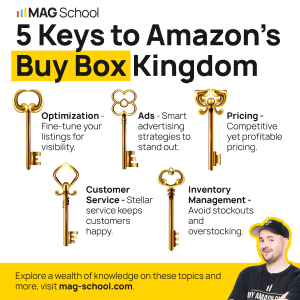
Why is the Buy Box so important?
- Conversion Champion: Over 80% of Amazon sales happen through the Buy Box. Holding this coveted spot significantly increases your conversion rate, as most shoppers default to the easiest and most prominent purchase option.
- Visibility & Traffic: Winning the Buy Box boosts your product’s visibility within search results and browsing categories. It’s akin to prime real estate, attracting more customer eyeballs and ultimately, more potential sales.
- Competitive Edge: Winning the Buy Box gives you a significant advantage over your competitors. Customers trust the seller featured in the Buy Box, perceiving them as the “preferred” or “best” option.
- Profit Engine: Increased conversions and visibility translate to higher sales and revenue. Winning the Buy Box fuels your Amazon business growth and opens doors to even greater success.
Winning and retaining the Buy Box requires sellers to meet specific criteria, including competitive pricing, reliable shipping, and positive customer feedback. Sellers should strive to optimize their listings to increase their chances of winning the Buy Box and maximizing their success on the Amazon platform.
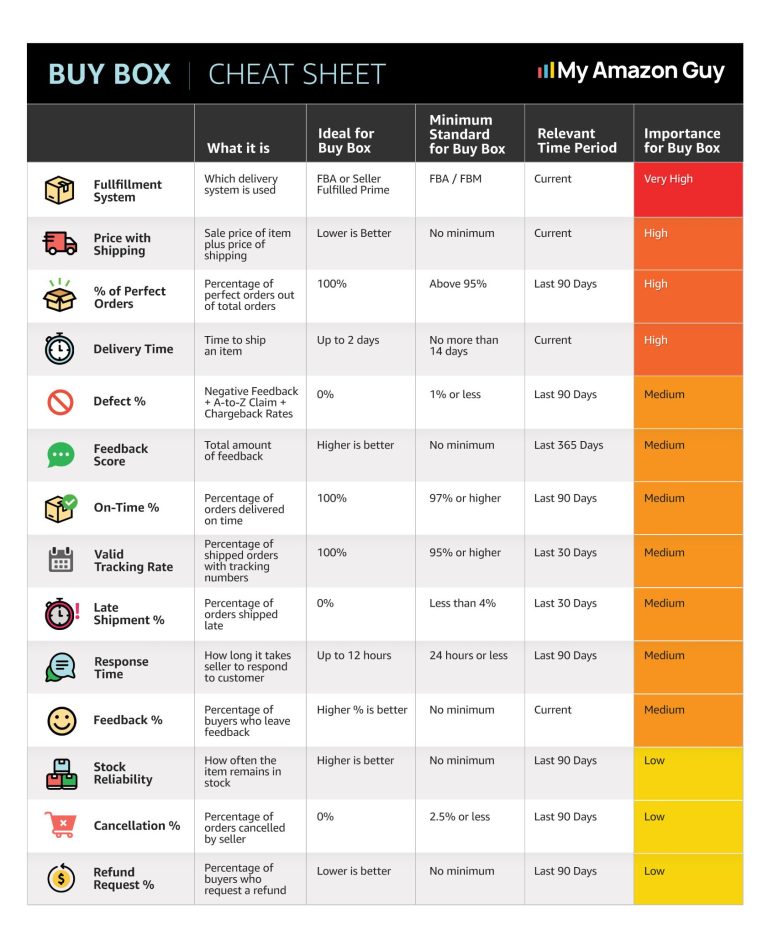
Amazon Product Listing Anatomy – Eligible For Return
What is “Eligible for Returns”?
It’s an indication on your Amazon listing that informs customers whether they can return your product and under what conditions. This policy encompasses factors like return deadlines, return shipping fees, and restocking charges. A clear and accessible return policy builds trust and reduces purchase anxiety, ultimately paving the way for smooth customer experiences and potentially higher conversions.
Importance for Sellers
- Builds Trust & Encourages Purchases: A flexible return policy reassures customers of their purchase decision. Knowing they can easily return unwanted items reduces hesitation and encourages them to “Add to Cart” with confidence.
- Improved Customer Satisfaction: Even satisfied customers might encounter unforeseen issues like wrong size or damaged products. A hassle-free return process fosters loyalty and positive feedback, strengthening your brand reputation.
- Boosted Conversion Rates: Studies show that listings with clear and favorable return policies have higher conversion rates compared to those with restrictive or unclear policies.
- Strategic Differentiation: In a competitive market, offering a generous return policy can set you apart from competitors, attracting customers who prioritize flexibility and peace of mind.
Considerations
- Balancing Risk & Reward: While flexible returns benefit customer satisfaction, they also increase logistics costs and potential product loss. Choose a policy that balances customer needs with your business goals.
- Communicate Clearly: Clearly outline your return policy on your listing and customer service page. Be transparent about deadlines, fees, and any exceptions to avoid confusion and disputes.
- Monitor & Adapt: Analyze your return rate and customer feedback to understand what works well and where you can improve. Adjust your policy based on your findings to maintain a profitable balance.
For a more in-depth discussion about managing your returns, you may read our newsletter article 11 Ways to Skillfully Manage Amazon Returns and Refunds
Amazon Product Listing Anatomy – Bullet Points
What are Bullet Points?
They’re a section on your Amazon product listing containing short, impactful sentences highlighting your product’s key features, benefits, and selling points. Each point is displayed in a separate line, often accompanied by bullet symbols, making them visually distinctive and easy to scan. Think of them as a compelling trailer for your product, sparking curiosity and encouraging viewers (shoppers) to learn more.
Why are Bullet Points so important?
- Quick Information Delivery:
- Bullet points allow sellers to present essential information in a scannable format.
- Customers can quickly grasp the main features and benefits of the product.
- Enhanced Readability:
- Bulleted lists enhance the readability of the product listing.
- They break down information into digestible chunks, making it easier for customers to understand.
- Key Selling Points:
- Bullet points serve as a platform to highlight the product’s unique selling points.
- Sellers can emphasize what makes their product stand out from the competition.
- Customer Decision-Making:
- Customers often make purchasing decisions based on the information presented in bullet points.
- Clear and compelling bullet points can influence customer choices.
- SEO and Search Visibility:
- Incorporating relevant keywords in bullet points contributes to search engine optimization (SEO).
- Optimized bullet points improve the product’s visibility in Amazon’s search results.
- Mobile Optimization:
- With a growing number of shoppers using mobile devices, bullet points cater to the mobile-friendly presentation of information.
- Mobile users can quickly assess key details without scrolling extensively.
- Compliance with Amazon Guidelines:
- Following Amazon’s guidelines for creating bullet points is crucial.
- Compliance ensures that the listing meets Amazon’s standards and avoids potential issues.
- Brand Consistency:
- Bullet points provide an opportunity to reinforce brand messaging.
- Maintaining consistency in language and tone across bullet points contributes to a cohesive brand image.
- Reduced Bounce Rates:
- Clear and informative bullet points can reduce bounce rates.
- Customers are more likely to stay on the product page and explore further when presented with relevant information.
- Increased Conversion Rates:
- Well-crafted bullet points contribute to a more convincing product presentation.
- Increased clarity and persuasion can lead to higher conversion rates.
Bullet Points Optimization Tips
- Keep it concise: Aim for 5-7 bullet points, each under 200 characters.
- Highlight benefits: Focus on how your product improves customers’ lives.
- Use keywords strategically: Integrate relevant keywords organically.
- Create variety: Include a mix of features, benefits, and calls to action.
- Test and refine: Monitor performance and adapt your points based on results.
Amazon Product Listing Anatomy – Frequently Bought Together
The frequently bought together section on the product detail page is located just below the product images. While Amazon does not reveal the specifics of its algorithm, it can be inferred that the products featured in this section are likely to be purchased together based on their past sales history.
Why Would You Want Your Products To Be In The “Frequently Bought Together”
Because you would rather have shoppers purchase your other products instead of from your competitors.
How Do You Get Your Products On “Frequently Bought Together”
Defensive Advertising is the key. An effective defensive approach involves securing a presence in the “frequently bought together” module on your own product pages.
This strategy facilitates cross-merchandising, allowing you to showcase more of your brand’s products to customers. Simultaneously, it serves as a deterrent to competitors aiming for those positions.
To target your own products for the frequently bought together section, consider implementing tactics such as establishing virtual product bundles, utilizing sponsored brand banner ads on Amazon Advertising, implementing tiered discount promotions, incorporating A+ product grids, and employing product targeting campaigns.
How Do You Get Your Products On “Frequently Bought Together” Module
On Competitor Listings
Complete your strategy by launching an offensive attack on your competitors’ detail pages. Utilize product targeting campaigns in Amazon Advertising to advertise directly on these pages.
By doing so, you enhance the likelihood of customers adding both your product and your competitors’ items to their carts. Once your sales reach a sufficient level, Amazon will recognize your product as a suitable match for the frequently bought together placement and display it accordingly.
We’ll be completing the Amazon Product Listing Anatomy in our next blog post, so be sure to follow our Full Service Amazon Agency.
Brand Story
A+ Content
Product Grid
Product Details
Videos
Brands In This Category On Amazon
Customer Reviews
4 Stars And Above


